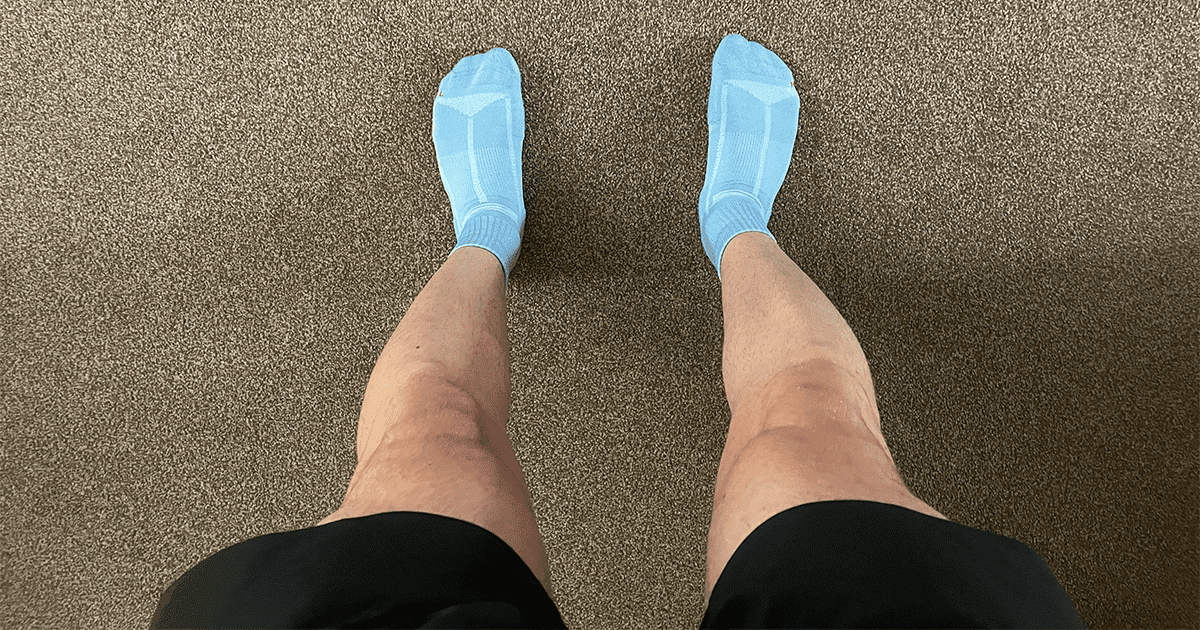Everything you need to know about the long run
There should be a place in every runner’s heart and training program for the long run. Here’s everything you need to know about the long run.
 What is considered a long run?
What is considered a long run?
While a 5k runner and a marathoner may have different opinions on how long a long run actually is, it is generally accepted that anything above the 60-minute mark is considered a long run.
While our long run can be measured by time, it can also be measured by distance. Another way of determining the length of your long run is running anywhere between 20-30% of your weekly mileage. For example, if you currently run 50 miles per week, your long run will be between 10 and 15 miles.
Why do we need to include a long run in our training program?
The long-run should be a staple in every runner’s training program. Although it may seem counterproductive for those racing over longer distances such as the marathon, a weekly long run does much more than preparing us to race over these longer distances.
The long-run actually allows us to become stronger and faster runners. This is due to a variety of adaptations made by going long. These include increased efficiency to deliver oxygen to the working muscles and stronger muscles, ligaments, and tendons.
The benefits of the long run will be discussed in further detail below…
Benefits of the long run
There are many benefits to including a weekly long run into your training. These include the ability to produce more mitochondria (powerhouse of the cell) and to increase our aerobic capacity.
Mitochondria is responsible for supplying our muscle cells with energy during aerobic exercise. Producing more mitochondria allows us to run faster and longer without getting tired as quickly. A key factor when looking to become a faster and stronger runner.
Aerobic capacity is the highest amount of oxygen we can consume during maximal exercise. Regular long runs allow us to increase our aerobic capacity, allowing faster running to seem easier.
Benefits of including a weekly long run include:
- Increased mitochondria
- Increased glycogen storage
- Increased aerobic capacity
- Strengthens our muscles, ligaments, and tendons
- Increased ability to use fat as a fuel
- Allows our regular runs to feel much shorter and easier
What pace should you run your long runs?

The traditional long run is run at a steady yet slow pace over a long distance (LSD). These traditional long runs create a solid aerobic base for all runners. Mixing up your long run and running at different paces will stimulate different energy systems, essential to becoming a faster runner. The different paces of the long-run will be discussed below.
Progression long run
A progression long run starts off at a conversational pace and gets progressively faster as the run goes on. Towards the end of a progression run, you can expect to be running near or at your lactate threshold. Running at your lactate threshold during training will increase your existing lactate threshold – allowing you to run faster without fatiguing as quickly.
Running at your lactate threshold towards the end of your long run will allow you to run fast on tired legs. This will prepare you for challenges you may encounter on race day, without increasing your risk of injury.
Conversational long run
A conversational long run is as it sounds, at a conversational pace. You should be able to speak full sentences and not be short on breathe. Chances are if you’re only able to get out a few words you’re going too fast.
When discussing pace, these conversational long runs are run slower than your current 10k race pace, yet fast enough to maintain a normal stride rate. One of the easiest ways to determine this pace is through heart rate training. Using a heart rate monitor, such as the one provided by Garmin, you can track your heart rate to determine your effort of running. For your long run, you want to be aiming between 70-80% of your max.
If using pace per mile, we recommend using the Macmillan training pace calculator to get accurate training paces for your long runs.
Workout long runs
Workout long runs enable us to increase the intensity of our long runs to simulate running fast on tired legs. Pretty much any form of running workout can be included within your long-run. These include:
- Tempo runs
- Intervals
- Fartlek runs
- Mile repeats
There are many different reasons to incorporate these workouts into our long run. For example, a 5k runner may include a tempo run towards the end of their long run to simulate running fast on tired legs – essential for racing success. A half-marathon runner, however, may choose to include mile repeats towards the beginning of their long run. This allows them to fatigue their legs early on and decreases the pace towards the end, also simulating race conditions while building mental strength.
How to recover from a long run
Now that you’ve finished your long run, it’s important to recover properly to prepare you for your next run while reducing your risk of injury. Ways in which we want to recover include:
- Static stretching
- Foam rolling
- Eat a meal high in both carbohydrates and protein
- Drink plenty of water
- Sleep
Static stretching

Directly after finishing your long run you want to perform some static stretches. Static stretching consists of holding a given movement for a short period of time. Examples of static stretches include:
- Hamstring stretch
- Quadricep stretch
- Calf & Achilles stretch
Static stretching after your run will help you cool down, increase your flexibility, and reduce your risk of injury.
Foam rolling
Foam rolling your muscles after running will reduce muscle tightness and reduce your risk of injury. Using a foam roller before running can also act as a warmup. Foam rolling increases the blood flow to our muscles, preparing them for exercise or speeding up the recovery process – whatever you’re aiming for.
Eat a meal high in protein and carbohydrates
After a long run, we want to eat a meal high in protein and carbohydrates, preferably within 30-minutes. This is the optimal time to kick start recovery, preparing us for our next run.
Protein is essential to build and repair our muscle cells, which were broken down during our long run. Likewise, carbohydrates are the bodies main source of energy – vital in performing high-intensity activities as well as everyday living.
Examples of post-run meals include:
- Chicken Caesar sandwich on wholemeal bread
- Chicken, sweet potato, and veg
- Chicken stir-fry
- Greek yoghurt and a banana
Related: What to eat the night before a long run.
Drink plenty of water
After finishing your long run, it is essential to drink plenty of water. This is to replace water lost as sweat during your run. The hotter it is, the more water you’ll want to drink. This is because we sweat more in the heat to cool down, requiring us to drink more water after, and preferably during our long run.
Tip: Weigh yourself directly before and immediately after your run. Drink the difference in water in the hours to follow your run.
Sleep
Getting the recommended 8-10 hours of sleep per night, especially on the night of your long run is essential to recovery. Once asleep our muscles are able to repair and rebuild much faster, necessary for recovery and preparation for our next run or workout.
We recommend reading our blog post on how to recover after a run or race for further information on recovery.
What to eat and drink before a long run

You should aim to eat one to two hours before your long run. Aim for a meal high in carbohydrates, yet enough protein. Examples of what to eat include:
- Bananas
- Toast
- Porridge
- Greek yoghurt
- Bagel
Before your long-run, you want to drink a minimum of 500ml of water, preferably up to an hour before your run. This will prevent you from becoming dehydrated during your run. If running longer than 60-minutes, or it’s really hot, drinking duration your run is also recommended.
Long run tips
To make your long run that little bit easier, we’ve gathered together a few tips:
- Remember to drink before, during, and after your long run
- Eat a small meal up to one hour before running
- Consider the use of running gels if running longer than 70-minutes
- Pace yourself
- Prepare mentally beforehand
To finish
The long-run should be a staple in every runner’s training plan. With the ability to make us faster and stronger, the long run also offers diversity in how it can be run. From progression runs to workout long runs, you’re sure not go bored of variety.

Matthew is a lifelong runner, chief tester of all products, the founder of Running101, and freelance content writer for active brands. When he’s not writing, he enjoys lifting weights, cycling in the Lake District, and watching fast cars drive in circles on a Sunday. He also has a BA in sport, exercise and physical activity from the University of Durham.




